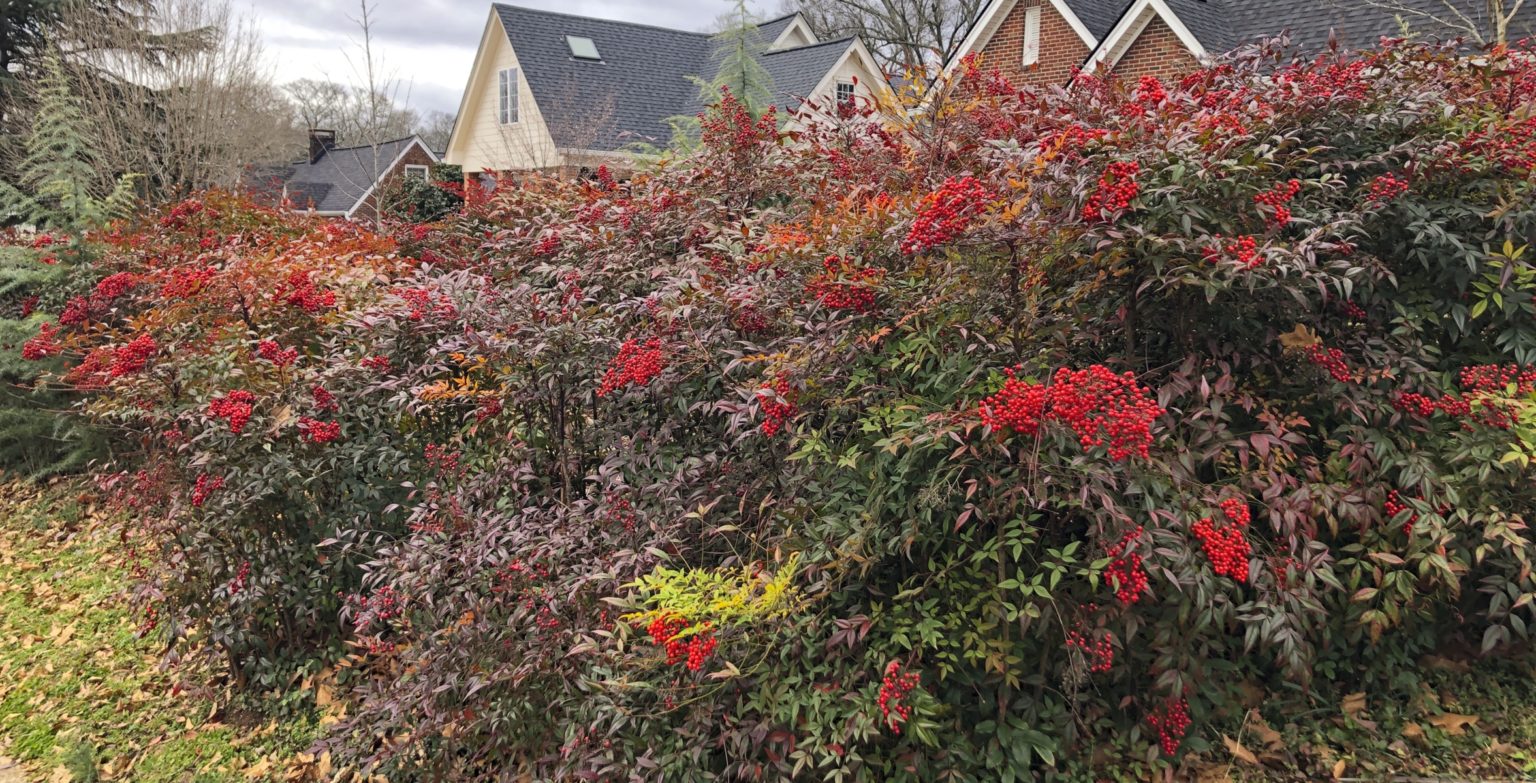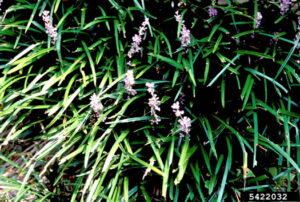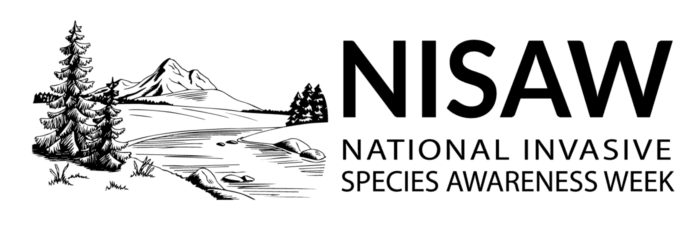Over the years, gardens have been enriched by the introduction of plants from other parts of the country and from abroad. These are non-native plants species often referred to as “exotic” species or “introduced” plants.
As individual homeowners and gardeners we’re too often unaware that the plants we purchase, plant or prune in our yards are ‘exotic’ and some of these have become “invasive” wrecking havoc on our ecosystems each year.
Threat to South Carolina Biodiversity
The purpose of this page is to make property owners more aware that much of this threat can be traced back to individual plant purchases for home or business landscapes, and what you can do to help.
Existing Plants: Unfortunately, many existing properties already have mature invasives integrated into their landscapes that migrate by wind-blown or wildlife dispersal of seed or berries every season; spreading them into the wild or vacant land. We offer the gallery of plants below to help you identify those in your own yard to target them for removal and replacement. On our Right-Plant-Right-Place page we feature several guides on alternate native plants to replace invasive species.
New Plants: Being aware of the problem is the first step in mitigation. Do your homework and know what you’re purchasing. Unfortunately, too many of our garden centers continue to sell invasive plants to unaware buyers. We’re working on that, but in the meanwhile, we encourage you to make use of the many excellent and easy-to-use apps and websites on our Resources Page to help research your plants before purchasing them to avoid invasive species.
The Rogues Gallery
Here is a collection of the invasive species most commonly found in urban and suburban South Carolina.
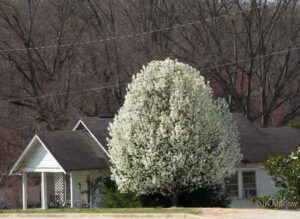
Callery or Bradford Pear
Pyrus calleryana Decne is a cultivar of the Pyrus calleryana is a medium sized thorny deciduous tree . It blooms robustly in early spring and the white blossoms. It is an aggressive re-seeder spread by birds across the Southeastern landscape, contributing directly to one of the worst invasive plant species in the region. Now banned in South Carolina effective in 2024.
Photo by J.K.Marlow
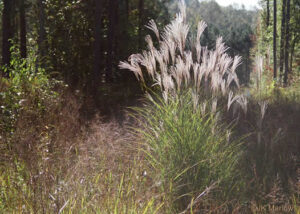
Chinese Silvergrass
Miscanthus sinensis is a densely bunched grass that grows up to 12 ft. (3.7 m) tall and invades yards, roadsides, forest edges, and abandoned property. It escapes yards by wind-dispersed seeds and rhizomes. The grass tends to dry out the soil and is considered extremely flammable, is toxic to dogs many nurseries continue to sell it.
Photo by J.K.Marlow
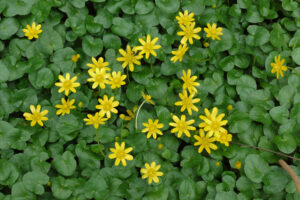
Fig Buttercup
Ficaria verna is an early spring ephemeral easily recognizable for it’s bright yellow flower, but what may look like an innocent wildflower is in fact an extremely aggressive mat-forming plant that quickly out-competes all other native plants along wet streambanks and moist regions thereby denying vital resources for pollinators and support healthy biodiverse ecosystems that generate ecosystem services, such as enhanced water quality and recreational value, for each of us to use in our daily lives.
Photo by J.K.Marlow
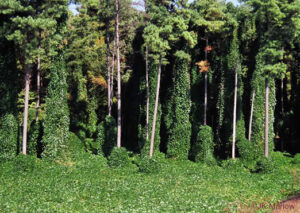
Kudzu
Pueraria montana is a semi-woody, trailing or climbing, perennial invasive vine native to Asia. It is extreamly aggressive growing both across the ground and vertically as much as a foot a day and 60 feet in one season. Eradication is possible with determination and perseverance.
Photo by J.K.Marlow
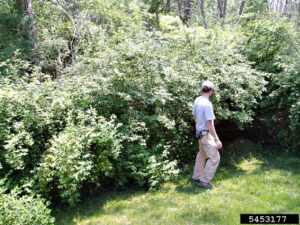
Privet
Most commonly Ligustrum sinense in the Upstate and L. japonicum in the Lowcountry. This tall shrub is commonly used as privacy screening for its dark waxy leaves, but the small white berries are spread by birds creating “privet thickets” in our natural areas. Roots shoot up quickly crowding out all beneficial plants, separating the ground from the sun, and sucking up water from the hydrology of the forest. In short order it converts an open forest into an impenetrable snarl of head-high privet trees. Unfortunately, this plant remains available in most commercial nurseries in SC.
Photo by Leslie J. Mehrhoff
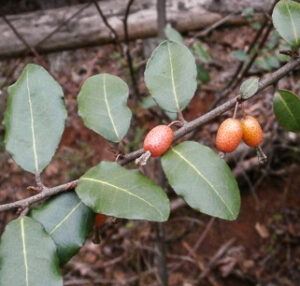
Thorny Olive
Elaeagnus pungens is a sprawling, sometimes vinelike shrub with of 3-4 ft growth in a season and climbing over 30′ in height. This thorny shrub is painful to prune, and even more difficult to kill without herbicide as it resprouts from damaged limbs and even when cut down to the roots. Seeds are spread by birds and suckering can create thickets in disturbed soil and natural areas. Still commercially available in SC.
Photo by J.K.Marlow
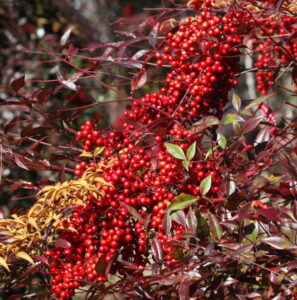
Nandina or Heavenly Bamboo
Nandina domestica is a fast-growing small evergreen shrub with white flowers in spring, burgundy fall leaves and bright red berries lasting all winter. Sadly, the berries are toxic to the very birds that spread them far and wide into our neighbors yards and natural areas.
Photo by Doug Lockard
Monkey Grass
Monkey Grass is a common name for several popular ground covers including Liriope (L.Muscari and L.Spicata) and Dward Mondo (Ophiopogon japonicus) all popular in the South. They are readily available, inexpensive, fast growing and low maintenance. Unfortunately, birds eat the non-toxic berries, spreading them into the wild, where they grow rapidly forming impenetrable underground mats, blocking and out-competing our native plants. See also Periwinkle.
Photo by James H. Miller
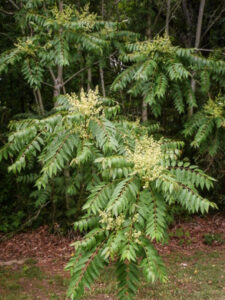
Tree of Heaven
Ailanthus altissima is a fast growing invasive tree can grow to 80 feet tall with a spread of 60 feet. It is a prolific seeder, producing up to 300,000 a year as well as suckering int dense thickets that crowd out native species. It secretes a chemical into the soil that is toxic to surrounding plants, is toxic to domestic pets, and the sap may cause skin rashes. It can readily damages sewer systems and foundations.
Photo by J.K.Marlow
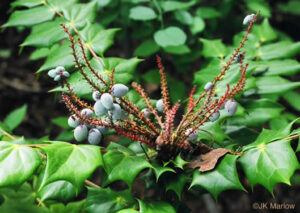
Leatherleaf Mahonia
The leatherleaf Mahonia bealei has been around since 1845, and provides interesting winter interest to the garden. Growing rapidly to 6 feet, the yellow flowers attract pollinators and birds love the bright blue berries and spread them widely into neighboring yards and natural areas. These plants are painful to prune and extremely difficult to eradicate without the use of herbicides. Although now shunned as an invasive this plant is readily available in garden centers around the state.
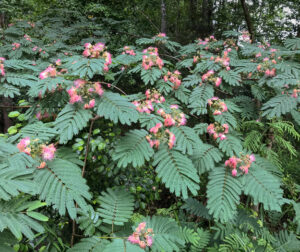
Mimosa – Persian Silk Tree
Despite its beauty, the Albizia julibrissin tree is an invasive species that proliferates in many soil types. It multiplies much quicker than native plants, thereby inhibiting their growth with shade from its umbrella-like crown. It is a prolific spreader, producing long brown seed pods which prevail throughout winter, and aggressive root systems. The plants are very messy, littering spent flowers, seed pods and sap from the foliage. They often host the fungal disease Fusarium which will negatively affect many ornamental and garden plants. Repeated cutting of spouts or use of a strong herbicide is required to stop the sprouts.
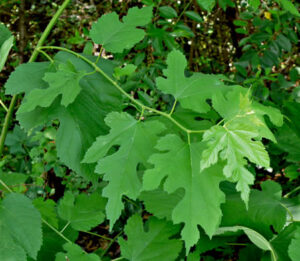
White Mulberry
The Morus alba is a fast-growing tree that invades forest edges, disturbed landsand open areas, displacing native species and is slowly outcompeting and replacing native red mulberry (Morus rubra) through hybridization and possibly through transmission of a harmful root disease. It’s shallow, invasive roots volunteer on the surface and can undermine the soil beneath your house. Berries that drop all over and stain walkways attract non-beneficial insects. Birds distribute the seeds into the natural areas and deer love the new growth. The Red Mulberry is native to SC and much less aggressive, does not invade the landscape or ecosystem, and it’s Ripe fruits are sweet, juicy, and can be eaten raw or made into pies, jellies, or jams. Also used in breads, muffins, and cakes. It can be difficult to determine the difference between red and white, but the red has longer berries.
Additional S.C. Non-native Plants (not featured above)
- Cherokee Rose, Rosa laevigata Michx
- Chinaberry, Melia azedarach (L.)
- Chinese Tallow, Triadica sebifera
- Chinese Wisteria, Wisteria sinensis (Sims) D
- English Ivy, Hedera helix L.
- Fig Buttercup, Ficaria verna
- Japanese Climbing Fern, Lygodium japonicum (Thunb.) Sw
- Japanese Honeysuckle, Lonicera japonica
- Japanese Knotweed, Polygonum cuspidatum
- Kudzu, Pueraria montana
- Princess Tree, Paulownia tomentosa
- Queen Anne’s Lace, Clematis terniflora DC
- Sweet Autumn Virginsbower, Daucus carota

